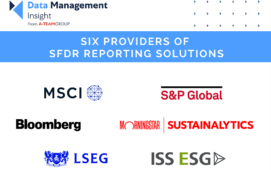Last week, the European Parliament approved the introduction of a new regulatory framework for the region’s ratings agencies as part of its post-crisis overhaul of the oversight of the financial services sector. The new regulation is aimed at ensuring that credit ratings used in the EU for regulatory purposes are of the “highest quality” and that the agencies are subject to “stringent” requirements.
Much like the US government’s planned crackdown on the sector, the European regulatory community is keen to meet the requirements discussed at the G20 meeting in April this year. Credit ratings agencies have come under a great deal of criticism since the financial crisis due to their perceived failure to reflect early enough in their ratings the worsening of market conditions in the run up to the crisis.
Currently, ratings agencies are subject to a fairly light touch approach from the majority of the European regulatory community and some member states do not regulate their activities at all. The most relevant EU directive to the space up until now has been Directive 2003/6/EC on insider dealing and market manipulation. However, the agencies are subject to a voluntary code of conduct issued by the International Organisation of Securities Commissions.
Despite this light touch approach, ratings are currently hard wired into the financial system and are often used as official criteria by regulators and investors to determine risk. The fallout from the crisis highlighted this fact and many investors and financial institutions are now attempting to sue ratings agencies for their inaccurate triple A ratings during the financial crisis, US pension fund Calpers is just one example.
The recently approved European regulation is therefore aimed at establishing a formalised approach to the sector at a European level and a common framework for measures adopted at a national level. This is in order to ensure the smooth functioning of the EU’s internal market with comparable levels of investor and consumer protection from one member state to another.
To this end, it provides for a legally binding registration and surveillance system for credit rating agencies that issue ratings used for regulatory purposes, thus effectively targeting the big three: Fitch, Moody’s and Standard & Poor’s. The European regulatory community will be charged with ensuring that these agencies avoid conflicts of interest in the rating process or “at least manage them adequately”. Regulators will also need to encourage (by stick or by carrot, although stick seems more likely) these agencies to improve the quality of their methodologies and thus the quality of their ratings. Disclosure obligations will be introduced across Europe to increase the transparency of the sector.
Much like many of the EU’s directives, the proposals are quite general at this stage due to their requirement to be transposed into each individual member state’s domestic regulatory regime. However, they do have a similar flavour to those proposed by the US government, which will also involve these agencies providing more transparency around their ratings practices and their pricing structures.
The US proposals are obviously more detailed at this stage because they are only applicable to one jurisdiction and are therefore able to be more prescriptive. The US government is suggesting that current legislation that mandates the use of ratings for areas such as risk management be repealed. The proposals would also bar ratings agencies from providing consulting services to any company they rated and would require them to disclose fees for a rating. This is to prevent “ratings shopping’’ in which a company solicits “preliminary ratings’’ from multiple agencies but only pays for and discloses the highest. Agencies will also be required to use different symbols for structured finance products, which are perceived to be riskier than other instruments.
The common theme from both sides of the pond is greater accountability and transparency into the ratings space. However, both sets of proposals have come under fire for not going far enough to tackle the industry’s reliance on ratings data. Trust in this data will continue to be an issue for some time to come and may force regulators to revisit these reforms again in the near future.
Subscribe to our newsletter




